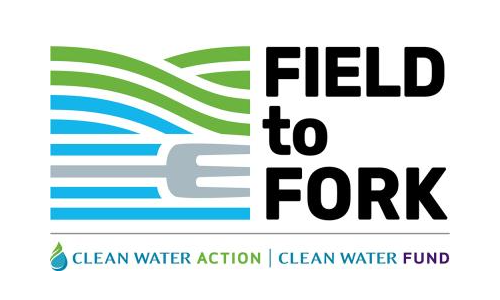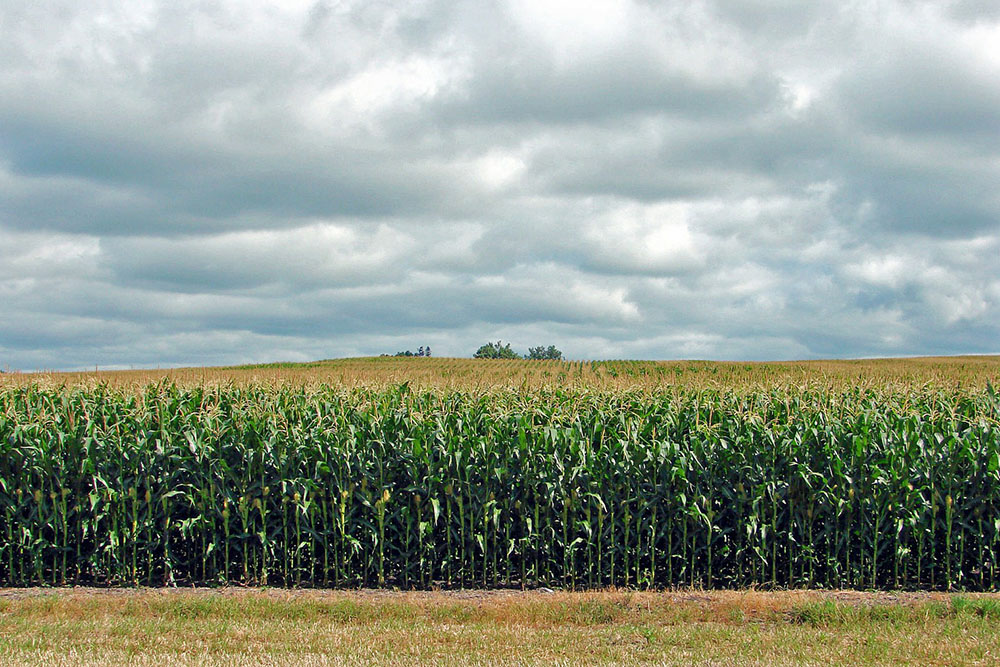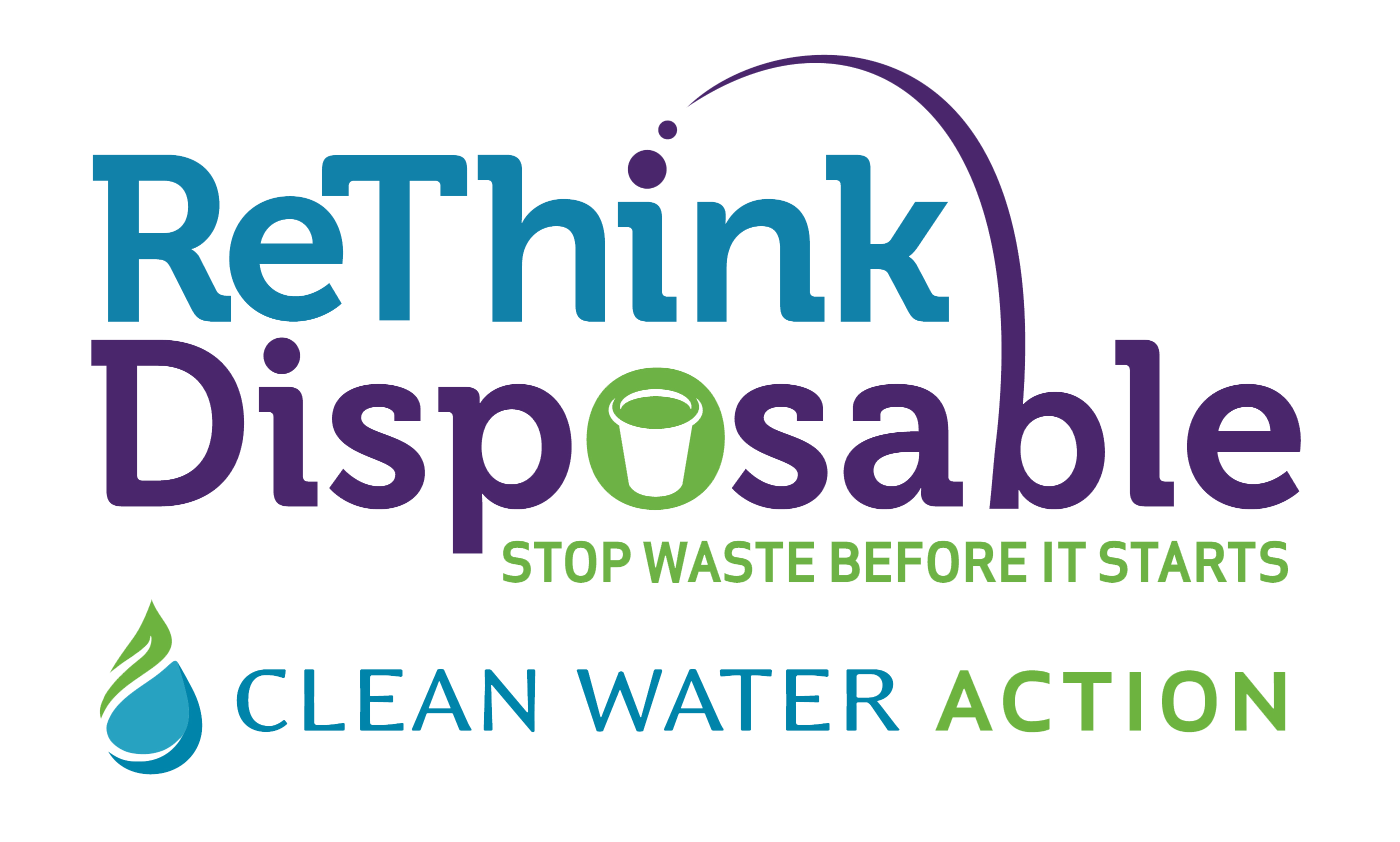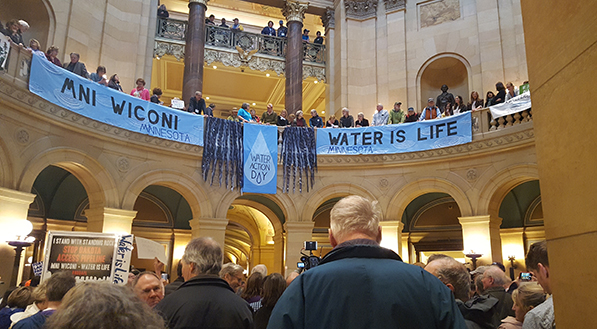In this issue
- Legislative wrap-up
- 3M Settlement update
- Field to Fork
- ReThink Disposable
- Minnesotans go Washington
- Water Action Day
- Download the PDF version
A budget year, the nation’s only divided legislature and a new governor —what could go wrong?
Summer is here and the 2019 legislative session is in the rearview mirror. An inordinate number of policy proposals — many of which would never see the light of day, late nights, endless hours of contentious debate, a looming constitutional deadline and a 21 hour around the clock special session describes what some are calling the worst Minnesota legislative session to date.
Two caucus leaders from opposite sides of the aisle shared similar sentiments when asked about the recent session. “Everyone I talk to around the Capitol says this (session) really was the worst, and it was bad,” said House Minority Leader Kurt Daudt, R-Crown. “Ultimately, we together need to figure out how this never happens again.” Similarly, after adjournment of the twenty one hour special session, Senate Minority Leader Tom Bakk said, “The Constitution is framed that the legislature is its own branch of government. I sure hope people think back on that and decide that under the separation of powers in our Constitution this is not how this process is supposed to work.” So, what happened? Where did it all go wrong?
When legislators returned to St. Paul to convene the legislative session, freshly elected Governor Tim Walz (DFL) and leadership from both chambers including Senate Majority Leader Paul Gazelka (R) and Speaker of the House Melissa Hortman (DFL) had high hopes that business would be conducted differently. In an attempt to avoid yet another special session, the trio instituted new deadlines for passing budget bills and sending targets to committees — all of which ultimately failed. Conference committee chairs didn’t receive the totals they should spend until Sunday, May 19th and a day later, the legislature inevitably missed the deadline to finish the regular 2019 session on time. Instead of public debate, discussion, and votes on provisions that differed between the house and senate versions of omnibus bills, leaders asked chairpeople of each committee to meet with them behind closed doors to hash out what would comprise final conference committee reports — and ultimately become part of the state’s next two year state budget.
Across the board, lawmakers failed to agree on much of anything and most initiatives pushed by both parties failed, including a few of Clean Water Action’s priorities. The legislature missed the opportunity to ban trichloroethylene (TCE), re-establish the MPCA Citizens’ Board, establish a lead safe homes grant program that would require testing and disclosure, and reduce chloride contamination in our water by implementing a voluntary salt applicator certification program statewide.
While many proposals crashed and burned, Clean Water Action’s hard work and dedication throughout session paid off when multiple priorities were successful, including the re-authorization of bonding projects previously funded by the constitutionally dedicated Environment and Natural Resource Trust Fund during the 2018 legislative session, full funding for the Forever Green Initiative, and the Firefighter and Children’s Health Protection Act- which passed with overwhelming support from both parties. The House passed the bill 125-5 and the Senate unanimously passed the bill 66-0. On Wednesday, May 22nd Governor Tim Walz signed the bill into law. The bipartisan legislation, authored by Representative Jamie Becker-Finn (DFL) and Senator Jeff Howe (R) will protect firefighters and children from the health risks associated with exposure to the toxic flame retardant chemicals by prohibiting the manufacturing and sale of upholstered furniture, mattresses, textiles and children’s products that contain flame retardant chemicals. It also restricts the use of firefighting foam containing perfluorinated chemicals (PFAS), toxic agents that have contaminated several drinking water sources in Minnesota.
Stay in the Loop: 3M Settlement Part 2
It’s been nearly a year and half since the State of Minnesota settled a natural resource damage lawsuit with 3M corporation, totaling in $850 million to be used to clean up PFAS contamination in the East Metro area. Clean Water Action has been monitoring the process to ensure the best possible outcome for Minnesota’s drinking water and treasured lakes and streams. Learn more here.
The first phase has largely consisted of intensive planning and well-testing, which will help the state prioritize projects that are time-sensitive and impact drinking water sources. The Pollution Control Agency sampled 809 wells in 2018, and expects to sample a similar amount this year. Of those 809 wells, 351 (43%) were issued an advisory by the Department of Health for exceeding the Health Risk Limits (HRLs) for PFAS chemicals.
For planning the next phases of the remediation process, the Pollution Control Agency and Department of Natural Resources have gathered input from the Government-3M and Citizen-Business work groups. Since they were first formed in July 2018, these work groups made up of community members have developed draft criteria for screening and evaluation of projects that could potentially be awarded settlement funding. This summer, the work groups will decide on the first set of expedited projects that will begin work right away.
Instrumental to the next stages of work will be the Conceptual Drinking Water Supply Plan created by the state agencies with input from each working group. The Plan will work in 5 stages:
1. Identify community profiles (population, growth, existing resources, etc)
2. Identify drinking water supply improvement options for each community
3. Work through drinking water supply options in more detail (costs, challenges, etc)
4. Bundle concept-level projects and solicit public comments
5. Recommend the best scenario for the East Metro
Currently the process is somewhere between Stage 2 and Stage 3. Each impacted community has experts participating in technical subgroups which will recommend improvement options for the communities based on their needs.
Clean Water Action will update you as staff learn more about which projects will be expedited and how that will impact drinking water in the region. To learn more about the settlement process, visit
New “Field to Fork” Campaign

Many who eat meat picture the animals we consume living peacefully, with room to roam, and carefully tended by a family farmer until it’s time for slaughter. Unfortunately, that vision of family farms has largely become a thing of the past. Modern agriculture is dominated by large corporations whose practices are often bad for the animals, our health, and our water and climate.
More acres of cropland dedicated to growing feed for meat than food for humans. To create this land, important forests and grasslands have been plowed under. These fields are then often treated with toxic chemicals and fertilizers that wash off into surrounding waterways. Manure is irresponsibly managed both in the field and at the industrial farms or feedlot operations. Emissions from processing, transportation and the animals themselves help drive the climate crisis. Finally, industrial agriculture is a top contributor to water pollution in the United States and Minnesota — more than 40% of the state’s water bodies are impaired due to agricultural pollution.
While one clear solution is changing to a plant-based diet, for cultural reasons or otherwise, that is not a choice many people are ready to make, or can make. It is important to make sure that the meat that is sold and consumed is raised as humanely and sustainably as possible.

History has shown that industrial agriculture isn’t going to change these practices without pressure from consumers, or even government action. As home to the headwaters of the Mississippi and many of important players in the industry, Minnesota is poised to lead this change. That’s why Clean Water Action is building on-the-ground organizing efforts to engage consumers and persuade these large food and agriculture companies to adopt sustainable policies for their meat supply chains through the new campaign “Field to Fork.” To find out how you can get involved, visit this page.
The campaign will collaborate with partners and interested individuals across the state to create the political will and public demand to enact policy, market, and industry solutions to reduce the pollution seen from meat’s supply chains. The power is in the consumers’ hand to demand change in the upstream production of these products and insist on sustainable policies. Transparency in where our food comes from and how it is produced is only growing, with consumers wanting more than just a meal that tastes good, but one they can feel good about as well.
Tackling Single-Use Plastic Waste
Single-use plastic waste is one of the most commonly found types of trash across the globe — we throw away more than 800 million tons of plastic each year. This waste can last centuries, breaking down into smaller and smaller pieces. The plastic trash, and the many chemicals it contains, washes up on beaches, is eaten by marine life, and then enters the food chain where it bioaccumulates in our bodies.

The best way to eliminate plastic waste is to stop pollution at the source — to use less of it. That means disrupting our throw-away lifestyle, which takes a joint effort from consumers, businesses, and government. Clean Water Action and Clean Water Fund developed its groundbreaking, award-winning program, ReThink Disposable, to do just that. ReThink Disposable works with businesses, institutions, governments, and individuals to reduce waste by inspiring a culture shift away from disposable products. The program has worked with hundreds of businesses across the country to replace disposable products with durable, reusable goods. ReThink Disposable staff has partnered with local governments and led the movement to break free from plastic.
Clean Water Action is excited to launch ReThink Disposable in Minnesota. The program will focus on working with individuals to make it easier to change consumer behavior.
Single-use, disposable products are everywhere. According to a 2010-2011 study conducted by Clean Water Action, 68% of litter found on the streets came from food and beverage take-out packaging. At least 27% of that food packaging could have been replaced by a reusable container. In recent months, Clean Water staff have conducted more than 150 surveys collected from Minnesotans. The survey helps staff understand the current attitudes and behaviors around reusable and disposable items and will help the organization develop and implement future education and outreach opportunities to create innovative solutions that help people overcome barriers to reducing their use of disposable items.
Consumers and businesses have the ability to reduce regularly plastic consumption. ReThink Disposable intends to provide programs and information that helps prevent plastic pollution and protect our environment. How can you choose to reuse?
Minnesotans Travel to Washington D.C. for Great Lakes Day
In March, seven Minnesotans went to Washington, D.C. for Great Lakes Day to educate Minnesota’s Congressional delegation about clean water and advocate for commonsense policies to protect water resources throughout the Great Lakes region. The delegation was joined by nearly 100 other advocates from around the Great Lakes region who were meeting with their representatives, from Wisconsin, Michigan, Illinois, Indiana, Ohio, Pennsylvania, and New York.
This year’s trip was especially important because five of Minnesota’s eight US Representatives are new to Congress. Clean Water’s delegation focused on educating Representatives and Senators by advocating for more funding for the Great Lakes Restoration Initiative (GLRI), tripling investments in drinking water infrastructure and clean water, preventing invasive Carp from getting into the lakes, and new funding for other invasive species research prevention in the lakes.
For decades, Clean Water Action has led the fight to protect and restore Lake Superior and the Great Lakes because they contain 20% of the Earth’s surface fresh water and provide drinking water for more than 40 million people. Yet for more than a century, the Great Lakes were like sewers and industrial waste disposal sites. No one wanted to face the consequences of these choices. If these are truly the Great Lakes, it’s time to do better.
The situation for the Great Lakes began to change in 2010 when Clean Water Action and partners from around the lakes pressured Congress and President Obama to pass the GLRI. With the support of members Clean Water Action members and thousands of Minnesotans, landmark legislation was passed to accelerate efforts to protect and restore the largest system of fresh surface water in the world — the Great Lakes.
Congress only takes action to solve these problems when they hear from constituents, and Clean Water Action made sure they heard our members’ voices. Even with the GLRI’s investments, it is going to take many more years to get to the point when all the Great Lakes are once again swimmable, fishable, and safe for all communities to get clean, affordable drinking water. They will only get there with the continuing support of Clean Water Action members. Thank you!

Water Action Day Packs the Capitol
Hundreds of Minnesotans (including many Clean Water Action staff and members) spent April 10, 2019 at the Capitol showing broad support for protecting Minnesota’s rivers, lakes, streams, and drinking water sources.
Participants met with legislators throughout the day — asking them to oppose efforts to weaken protections for Minnesota’s waters and calling on them to adopt policies that protect every one of the state’s 10,000 lakes, along with the state’s wetlands and streams. The Capitol rotunda was packed at the end of the day (despite a huge April snowstorm!) as speakers celebrated Minnesotans’ special connection with our water.

